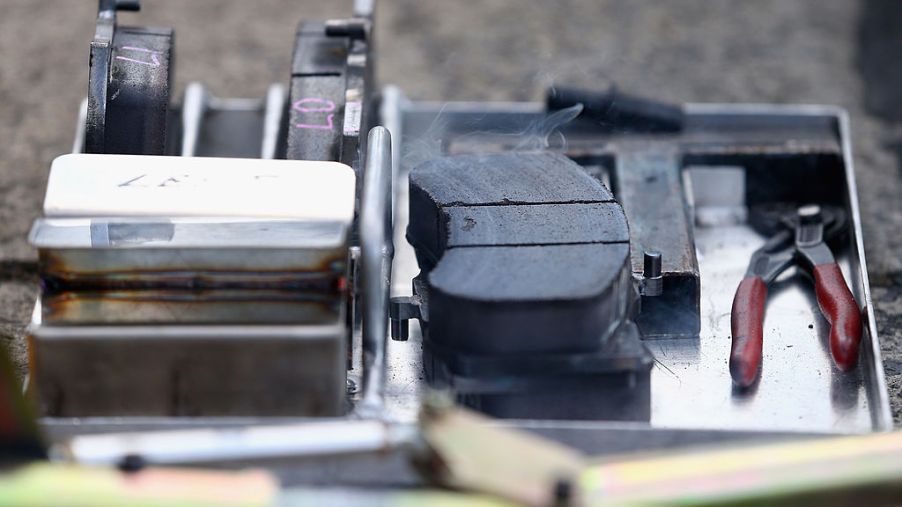
Metallic Brake Pads and Ceramic Brake Pads: Which Is Better?
As much as we like our cars to be able to go fast, it is just as important that our vehicles stop when we want them to as well. Brake pads are an essential component of a functioning brake system in your car, so you want to be sure that you have brake pads that work for your car and driving style. Read on to learn more about brake pads and whether you should opt for ceramic or metallic brake pads.
How brake pads work
To stop their car, the driver needs to simply push their foot down on the brake pedal. The force they apply on the pedal will influence how quickly the car stops. Brake systems slow the car by turning its kinetic energy into friction. This friction slows the tires, which ultimately slows down the car.
Brake pads are the component of the brake system that provide the friction. This happens through the following process:
- Pressure on the brake pedal activates a cylinder that sends brake fluid through a hose and to the calipers;
- Calipers engage the brake pads;
- Brake pads apply pressure to the rotor connected to each wheel;
- Pressure on the rotor creates the friction required to slow or stop the car.
Given the importance of brake pads, make sure your car is sporting the best option.
Ceramic brake pads
Ceramic brake pads are one of the more recent innovations in brake pad technology and were first introduced in the 1980s. These pads are composed of a blend of ceramic and copper fibers embedded in the pad compound.
The copper fibers increase friction and heat conductivity. This composition allows the brake pads to withstand higher brake temperatures and faster recovery.
The most compelling benefits of ceramic brake pads include:
- Quieter than metallic pads, creating little to no extra sound when force is applied to the brakes
- Cleaner wheels due to finer, lighter-colored brake dust
- Stable under a wide range of temperatures
- Improved durability, increasing the life of the brake pads
While there are many benefits, there are a few downsides to ceramic brake pads:
- More expensive than metallic pads
- Increased wear on brake rotors due to heat transfer
- Not ideal for very cold climates, racing, or heavy-duty towing
Metallic brake pads
Metallic brake pads include metallic fibers in the brake pad compound. The volume of metallic fibers can be anywhere from 30-65% by weight.
The most common metal types used for metallic brake pads are copper, iron, and steel. Lower quality pads will have larger, coarser metallic fibers in the pad, while higher-quality metallic brake pads will include finer fibers. The metals are combined with graphite lubricants and fillers to create the brake pad.
The most compelling benefits of metallic brake pads include:
- Good gripping power when cold
- Less expensive than ceramic pads
- Easier on rotors than ceramic pads
- Compatible for racing and heavy-duty towing
Things that may want to make you re-consider whether metallic brake pads are right for your vehicle:
- Louder than ceramic pads
- Create more dust, making for dirtier wheels
- Shorter life span than ceramic pads
Making the best choice for you
Choosing the brake pads that make the most sense for you and your vehicle will depend on your climate, driving style, and performance preferences.
If your priority is performance or if you live in an extremely cold climate, metallic brake pads are the better bet. If you are looking for brake pads that make the least noise or hold up the best over time, ceramic brakes are the best option for you.
No matter which brake pads you choose, make sure to say a little thank you to your brake pads the next time they allow you to make a quick stop.


